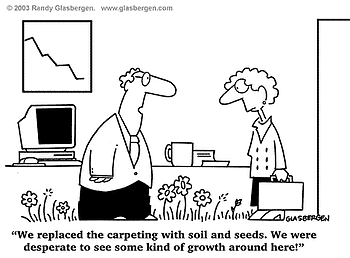Blogging is one of the most valuable pieces of any content marketing strategy. It establishes thought leadership, allows you to educate your prospects and customers about your value proposition and the problems you solve, creates a platform for engagement, and is a primary contributor to lead generation.
Yet, one of the primary complaints that I get from businesses that are blogging is that they don’t feel like the blog is getting traction, or that they can’t quantify the impact of their blogging efforts. This typically leads to inconsistent efforts, and what I like to call “broken blogs.”
Several years ago, I sat down to determine the real value created from our blogging efforts. My analysis uncovered more than a $2 million impact. I can confidently say that Imagine Business Development wouldn’t exist today, were it not for the investment of time and money into our blog.
I’ve been evangelizing the benefits of business blogging for years. When I started, my challenge was convincing executives that their companies should blog. Today, about ½ of the prospects that I connect with have a blog of some type, though few of them have blogs that produce clear, measurable results, and most are used inconsistently.
Merely having a blog is not enough to meet the promise of business blogging. You must blog with a purpose. Here are 3 keys that have allowed us to make our blog effective.
1. Have a clear point-of-view.
No one ever acted on anything because of the facts. They're moved to do something. Far, far too many blogs are boring. Please don't confuse a boring blog with a boring company. There are no boring companies. Every company that I have ever met is interesting to the people whose problems they solve.
An effective blogging approach:
- Challenges your customer's thinking.
- Highlights the problems and opportunities your customers have that they don't fully understand. The more you write about the implications of what you are sharing, the more likely your blog will resonate, and your readers will act.
- Stands on its own. Your blog should be geared to educating/enlightening your customer's world - not bragging about your products. This is not to say that you can’t have an occasional blog post highlighting your products, but keep those few and far between.
2. Never forget that your blog exists for your readers.
The publishing business is under tremendous pressure for one simple reason - they forgot that the purpose of their business is to serve their readers, not their advertisers.
When you start, or run, your blog, you are in the publishing business, and your business is the advertiser. Serve your reader.
One major cause of blogging failure is that there is either no editorial philosophy, or the editorial philosophy is poorly thought out. You can't merely say, "Hey guys, let's start blogging," and expect the leads to start flowing.
You must do what every successful publisher does:
- Clearly define who your desired reader is (yes, that means you must clearly define your buyer personas).
- Determine the style of writing you want the blog to be in (this is especially important if you are going to have more than one person write for your blog).
- Listen (and watch), intently, to how your readers are reacting to your posts (yes that means you have to track, measure and debrief).
3. If you want your readers to take action, make it clear what action you want them to take.
I am constantly amazed by the volume of marketing material (blogs are not alone here) that are designed to cause actions, yet, never make it clear what action the reader/listener should take.
Your readers are not going to sit around trying to guess what they should do as a result of reading your blog - they've got too much on their plate already. If you want them to download a paper, watch a video, or even call you - tell them!
And, please, whatever you do, make sure that you put calls-to-action (CTAs) at the end of every blog post. I'm amazed by how rarely I see CTAs at the end of great posts. You've just created value; you've educated, provoked and shared. Make it easy for your reader to engage more deeply.

 Doug Davidoff
Doug Davidoff
